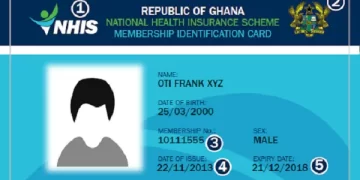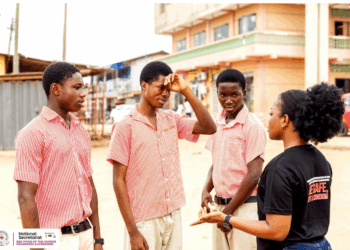Celebrating differences; encouraging the recognition of the unique strengths and perspectives of autistic individuals is the theme for this year’s international autism awareness day celebration.
Classified as part of a spectrum of disorders, The term autism was first used by Eugene Bleuler, a psychiatrist who used it in 1911, to describe a specific group of symptoms which were seen as symptoms of schizophrenia as an extreme social withdrawal. Following in his stead, DR. LEO kanner, described autism in his article “autistic disturbances of affective contact” as an emotional and social disorder. The following year also witnessed the publication of another article by Hans Asperger who described autism as a disorder of children with normal intelligence. These publications in the twentieth century, went a long way to help in the separation of autism from schizophrenia in 1980. Finally, the notion of autism as a spectrum was developed in 2013 by the “American Psychiatric Association” in the fifth edition of the “Diagnostic and Statistical Manual of Mental Disorders” by combining all subcategories of autism and related conditions into one unified category, including varied characteristics, severity, and presentation of the symptoms.
The United Nations General Assembly unanimously declared 2 April as World Autism Awareness Day (A/RES/62/139) to highlight the need to help improve the quality of life of those with autism so they can lead full and meaningful lives as an integral part of society.
In 2008, the United Nations introduced the convention on rights of persons with disabilities to guarantee the freedom and inclusion of all persons with disabilities, including autistic individuals. This convention sought to promote, protect and ensure the full and equal enjoyment of all human rights and fundamental freedoms by all persons with disabilities, and to promote respect for their inherent dignity. It is a vital tool to foster an inclusive and caring society for all and to ensure that all children and adults with autism can lead full and meaningful lives.
Autism is a lifelong neurological condition that manifests during early childhood, irrespective of gender, race or socio-economic status. The term Autism Spectrum refers to a range of characteristics and it is 4.3times more prevalent in boys than girls. This according to scientists, is due to the fact that girls mostly go undiagnosed and they are also able to mask autism symptoms better than boys do.
It is a complex developmental disability that typically appears during the first three years of life and is the result of a neurological disorder that affects the normal functioning of the brain, impacting development in the areas of social interaction and communication skills. Autism is one of the Pervasive Developmental Disorders (PDD), a category of neurological disorders characterised by “severe and pervasive impairment in several areas of development.” Family income, lifestyle, and educational levels do not affect the chance of autism’s occurrence.
Both individuals and adults with autism typically show difficulties in verbal and non-verbal communication, social interactions, and leisure or play activities. The disorder makes it hard for them to communicate with others and relate to the outside world. In some cases, aggressive and/or self-injurious behavior may be present. Persons with autism may exhibit repeated body movements (hand flapping, rocking), unusual responses to people or attachments to objects and resistance to changes in routines. Individuals may also experience sensitivities in the five senses of sight, hearing, touch, smell and taste.
Its prevalence rate makes autism one of the most common developmental disabilities. Yet most of the public, including many professionals in the medical, educational, and vocational fields, are still unaware of how autism affects people and how they can effectively work with individuals who are autistic. Compared with other conditions autism is relatively rare. The American Psychiatric Association estimated that the prevalence is about 5 cases per 10000.
As a result of misconceptions surrounding autism and other neurological differences, the level of stigmatization is very high; affecting people living with these differences. It is in the light of these that policy makers and donor agencies need to make conscious efforts in order to make this life comfortable for all.
BY ELIAS KODELOGO.



























